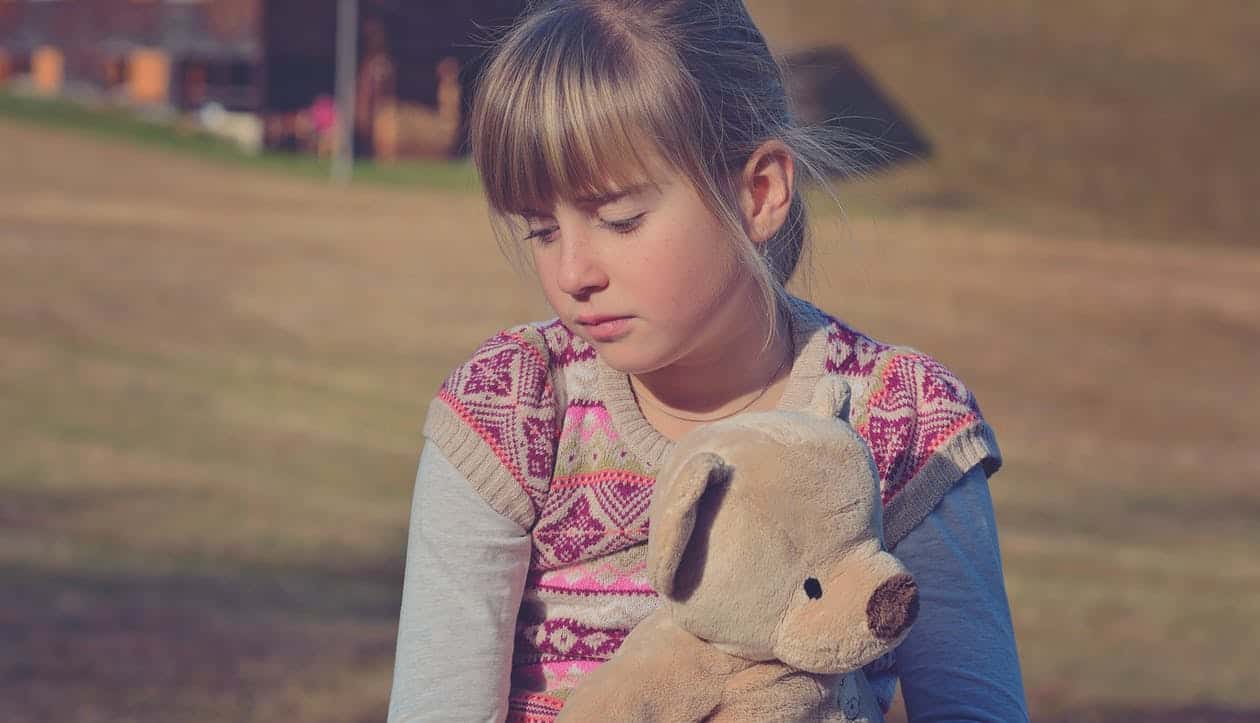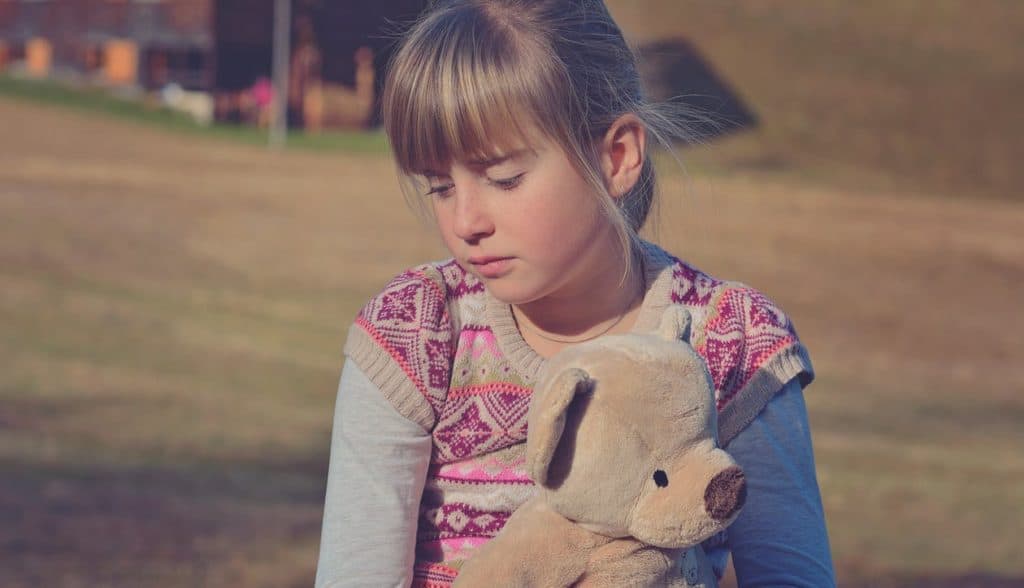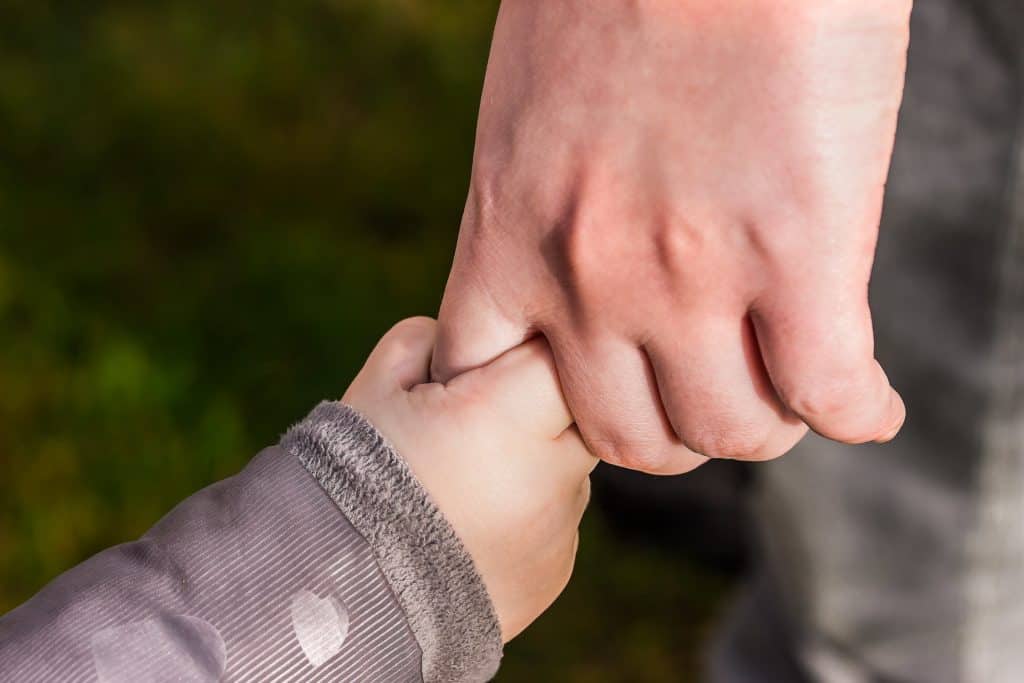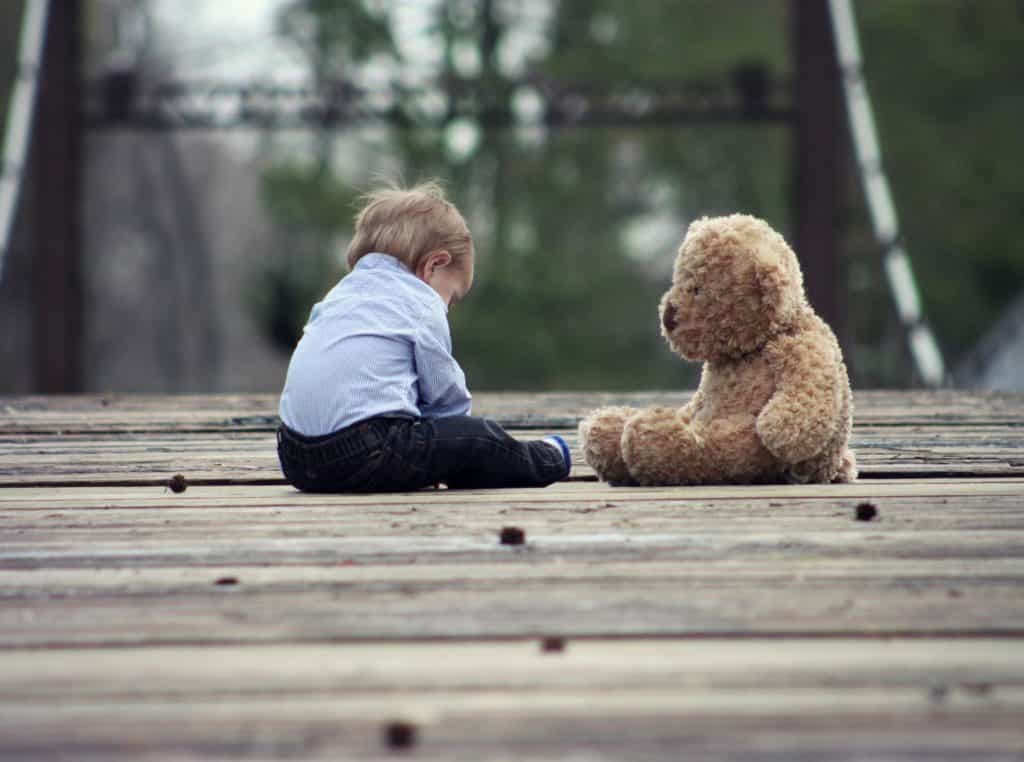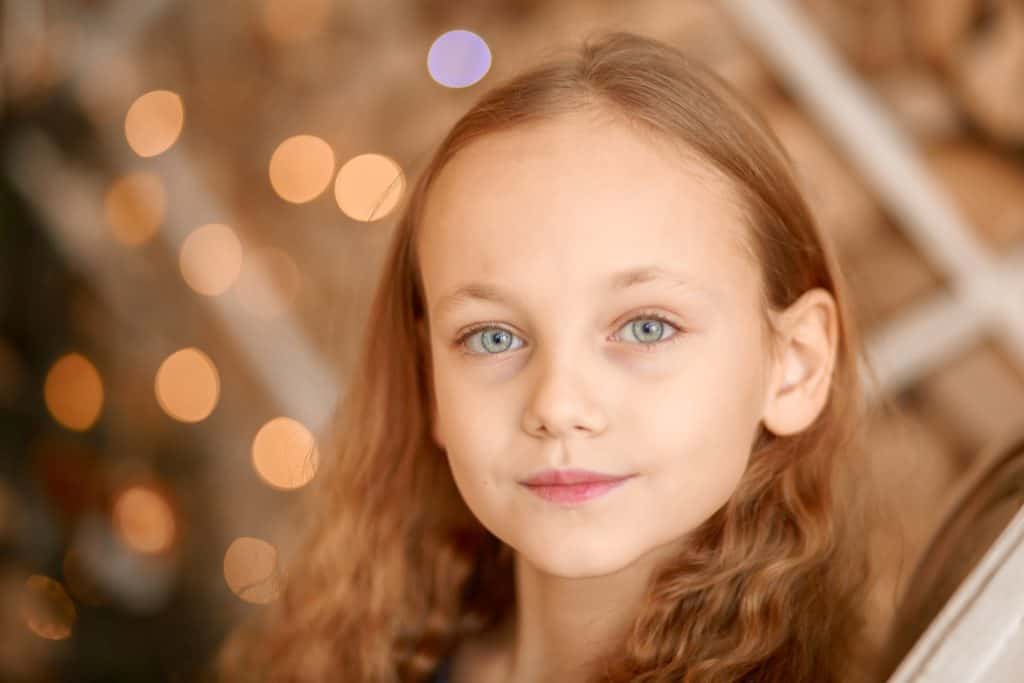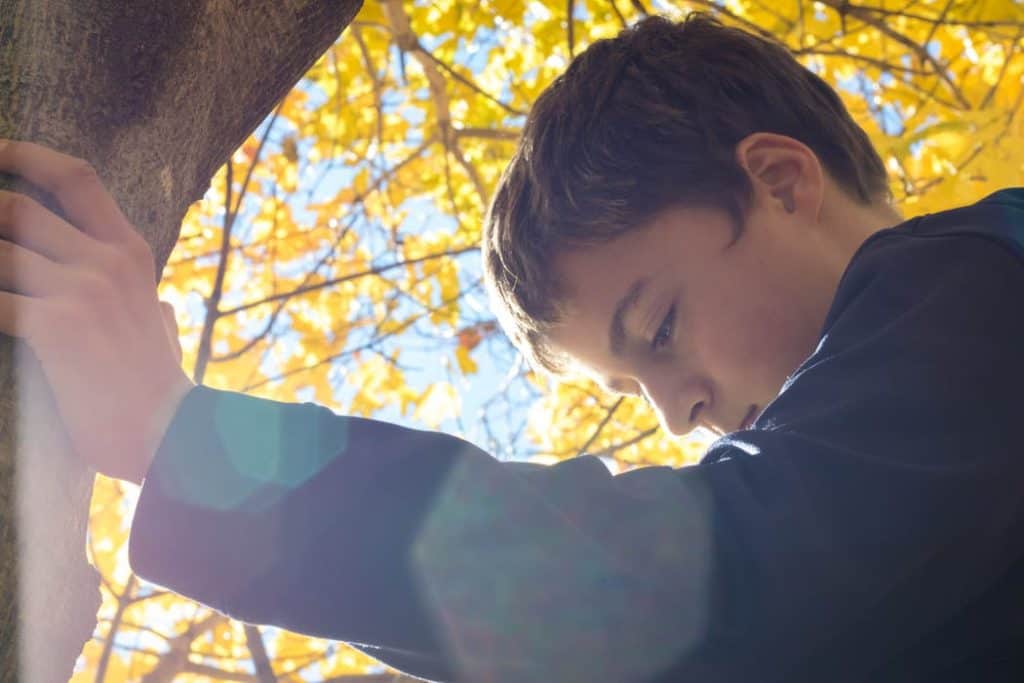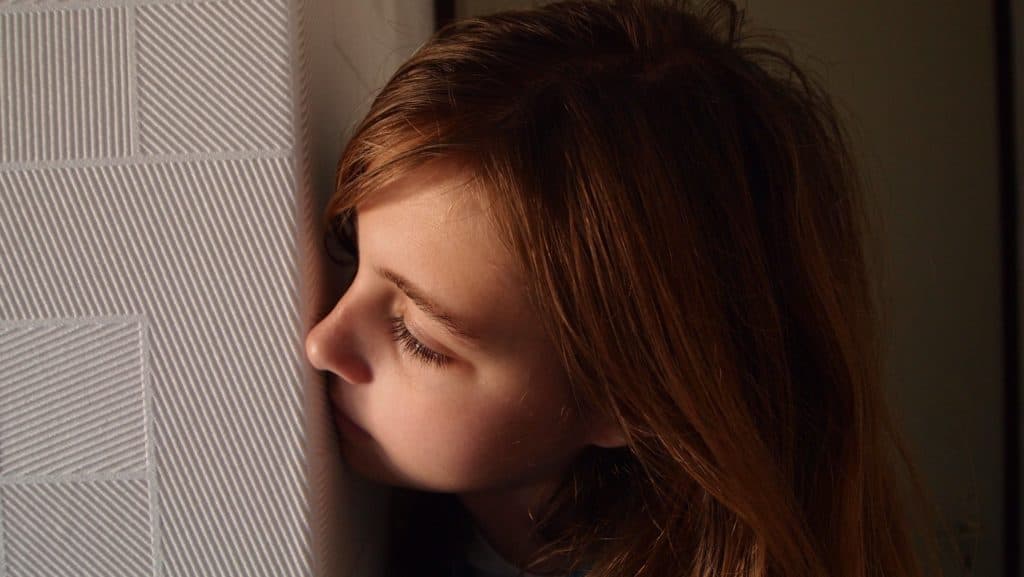It is natural for kids (including toddlers, pre-schoolers and school-age children) to experience worry and fear at times throughout their childhood. Occasional anxiety and fear are natural responses as children discover new experiences and learn about the world. Heightened alertness can be beneficial in some situations, such as presenting to their class or lining up at the start of a sporting race, and this healthy stress response can assist kids to perform at their best.
In most circumstances, specific fears or concerns come and go throughout childhood and don’t hang about for extended periods of time. For example, toddlers may be afraid of loud noises or fear separation from their parents or other prominent family members. Pre-schoolers may be afraid of the dark, or hurting themselves playing outdoors. School-age children may suffer periods of performance anxiety (e.g. before sitting a test) or fear particular social or family situations.
However, when a child experiences ongoing or chronic worry (termed as anxiety), it may largely affect their quality of life and can impact their emotional, physical and mental health on a day-to-day basis. Children suffering from anxiety may need professional help and support when their chronic worry:
-is disproportionate to any issues they are currently facing
-stops them from doing things other children of the same age can do comfortably
-prevents them from leaving the house or attending/participating at school
-inhibits their ability to socialise with other children or adults
-is beginning to impact their physical or mental health
Children aged eight years and over are more likely to suffer from an anxiety disorder than children younger than eight years old. Why? Because anxiety is most often associated with a fear of a possible future outcome. Young children such as toddlers and pre-schoolers tend to lack the understanding and comprehension skills of children aged 8+ (whom generally understand particular actions affect particular outcomes), and therefore tend to worry less than older children.
What Causes Anxiety In Kids?
Anxiety disorders usually arise in children due to a combination of different factors, rather than any single cause. These causes may include family history, personality traits, trauma/stressful events or other health problems.
One of the most common reasons a child develops an anxiety disorder is due to family history of anxiety or mental health. Kids are like sponges, and when they witness family members respond to different situations with anxiety, they may be likely to do the same.
Children with ‘Type A’ personalities i.e. perfectionists who like to be in control, or timid children lacking self-confidence may be prone to suffering from anxiety.
Stressful events which may trigger anxiety disorders in kids include accidents, nasty injuries, regularly moving from one place to another, caring for a seriously ill family member or relationship breakdowns.
Children who suffer from chronic physical (e.g. asthma), mental or behavioural (e.g. ADHD) health problems may be prone to suffering from anxiety.
Signs Of Anxiety In Children
The signs (and symptoms) of anxiety in children are many, and the experience of one child may be different to the next, depending on their individual circumstances. Anxiety in kids may present itself in the form of physical, emotional or behavioural signs, as follows:
Physical Signs (And Symptoms) Of Anxiety In Children
-a racing heart or heart palpitations
-shortness of breath
-excessive perspiration, shaking or trembling when feeling nervous or under pressure
-hot or cold flushes
-feeling dizzy or lightheaded
-refusing to eat, particularly at school or when feeling nervous about something
-avoiding using the bathroom when anywhere else but home
-sleeping difficulties, such as sleeping unaccompanied, falling to sleep, nightmares or night terrors, or staying asleep
-recurring nightmares about something awful happening to / or the loss of a loved one
-feelings of restlessness or hyperactivity
-difficulty concentrating or focusing their attention on the task at hand
-regular headaches
-muscle tension or pain
-tightness in the chest or throat
-numbness or tingling in the hands or feet (or elsewhere)
-nervous or upset stomach, nausea, vomiting, frequent urination or diarrhoea
-panic attacks (i.e. sudden onset of intense fear, succeeded by what is commonly a mix of symptoms, such as increased heart rate, palpitations, shortness of breath, trembling and/or perspiration)
-exhaustion or fatigue (as a result of chronic worry)
Emotional Signs Of Anxiety In Children
-worries excessively or often feels anxious and has difficulty containing their fear or worry
-exhibiting fear or worry disproportionate to the danger or problem at hand
-worrying excessively about events or situations that will occur quite some time down the track (e.g. fear of sitting end-of-year exams in February)
-constantly requiring reassurance or approval from others (such as parents, siblings, friends) due to an array of worries or concerns
-overly fearful of sitting tests or examinations, or presenting material to a group of people
-has a phobia or phobias about certain tangible things (e.g. spiders) or phenomenon (e.g. natural disasters)
-hypersensitive, overly agitated or irritable without a clear reason as to why
-crying regularly or often having tantrums
-has difficulty saying goodbye when separated from close family members (i.e. becomes emotional or inconsolable)
-protesting “I can’t do it!” and getting upset when required to do something (without a logical reason)
Behavioural Signs Of Anxiety In Children
-having trouble taking part in activities with other children e.g. playground games; may prefer to sit alone indoors
-remaining silent in group project situations
-fear of asking others for help
-avoiding particular activities or situations
-reporting feeling sick or unwell (for example, having a head- or stomach-ache) when required to partake in an activity they feel apprehensive towards (despite no medical reason for feeling sick)
-refuses to attend social activities with friends or peers outside of school (e.g. evening sports training, weekend birthday celebrations)
-daycare, kindergarten or school refusal
-perfectionism, or re-doing a task until it is completely faultless
-fear of making errors or mistakes
-has difficulty enjoying normal activities due to distraction (caused by worries or concerns)
-exhibits compulsive behaviour (such as biting fingernails or washing hands)
-constantly asks “what if happens?”
-social fear re: speaking to peers or strangers in public
Common Anxiety Disorders In Children
A child may be diagnosed with an anxiety disorder when their feelings of anxiety are both prevalent and intense. There are six key anxiety disorders that commonly occur amongst children whom suffer from chronic worry. Let’s take a look at each of these anxiety disorders.
Generalised Anxiety Disorder
Children suffering from Generalised Anxiety Disorder (GAD) experience excessive, unrealistic worry with regards to various aspects of their daily life, which may include health/safety and that of close family members, friendships, school, academic performance, extracurricular achievements and/or current world events.
Their worries may centre around things that have happened in the past, how they are currently performing at school/sport/music, their friendships and bad things that might occur in the future. Children suffering from GAD often put lots of pressure on themselves, strive to achieve perfection and are fearful of making mistakes. GAD causes children to regularly require reassurance or approval from others, including that of family, friends and teachers.
Children battling GAD can often feel overwhelmed, particularly by a test or examination environment, new people or unfamiliar situations and their worries and concerns may lead to avoiding or missing out on school or social events altogether. GAD can bring about physical symptoms in children, including exhaustion, headaches or an upset stomach.
Separation Anxiety
Separation Anxiety in children is characterised by fear or excessive worry when apart from parents, key family members or caregivers e.g. a nanny or grandparents. Children suffering from separation anxiety may:
-complain about feeling unwell to avoid being separated from their parent or caregivers
-cry excessively, cling or protest when it comes time to be separated
-refuse going to daycare, kindergarten or school, or school camps and/or sleepovers
-be fearful of something awful happening to themselves or someone they love while divided, such as an injury or accident
-experience excessive homesickness
-feel very miserable
-insist a parent or loved one keeps them company as they fall asleep at night
Fear of separation is not uncommon in toddlers, who must learn to be apart from parents or loved ones in situations such as beginning childcare or pre-schoolers starting kindergarten. Once comfortable with their new environment, these feelings will usually pass. However, if a child experiences emotional distraught and is hard to calm down when saying goodbye to loved ones once reaching kindergarten/school age, they may be suffering from separation anxiety.
Social Anxiety Disorder/Phobia
Social Phobia or Social Anxiety Disorder is characterised by extreme shyness and intense fear of speaking in front of other people in social or performance settings. For example, a child may feel terrified answering a question in class, making a presentation, participating in a sporting final, or having a conversation with a new or somewhat unfamiliar person/people.
Children with social phobia are often self-conscious and withdrawn. They may be fearful of: standing out or being the focus of others’ attention; embarrassing themselves; being laughed at; or viewed negatively by others. Children with social anxiety disorder struggle meeting new people and participating in group projects or activities, and often have a limited social group.
Social anxiety disorder can largely disrupt a child’s confidence and ability to attend common childhood social situations, such as school, birthday parties or participating in extracurricular activities such as sport or musical performance.
In extreme cases, a child may suffer from Selective Mutism – a rare, specific childhood anxiety disorder, whereby a child or teenager capable of speaking is too fearful to speak whatsoever in specific situations where verbal communication is necessary, but is comfortable speaking in others. For example, a child battling selective mutism may be unable to speak at school, in public or at sports or music practice, but when at home or amongst close friends for example, has no trouble speaking or interacting. Selective mutism can inhibit a child’s ability to perform at school, as well as their ability to interact with other children and form and uphold friendships.
Specific Phobias
Specific Phobias are characterised by an intense and unreasonable fear of certain objects or situations that in most cases realistically pose only a small threat. For example, common phobias in children include animals such as dogs, insects or birds. Phobias in children regarding specific situations may include loud noises, the dark, water, storms, heights, flying in an aeroplane, or injections/medical procedures.
Children suffering specific phobias will often do all they can to avoid a certain experience, such as participating in swimming lessons due to a phobia of water. If they are able to endure the situation or object they fear, they may cry or scream hysterically, have a tantrum or cling to other people such as parents or siblings. It is extremely difficult for a child to control their irrational fear and some specific phobias can largely interfere with life, such as going outdoors due to a phobia of birds.
Obsessive Compulsive Disorder (OCD)
Obsessive Compulsive Disorder, often shortened to ‘OCD’, refers to repetitive, intrusive and unwanted thoughts (obsessions) and repetitive mental or physical actions/routines to relieve the unwanted thoughts and anxiety (compulsions).
For example, a child may repeatedly think about the presence of germs (obsession), and as a result, repeatedly wash their hands to try and relieve the discomfort (compulsion). Other common obsessions in children may include the requirement for symmetry or checking. OCD can significantly impact a child’s ability to live a happy day-to-day life.
Post-Traumatic Stress Disorder (PTSD)
Post-Traumatic Stress Disorder (PTSD) in children is characterised by intense stress, anxiety and fear following witnessing or experiencing a traumatic, extremely violent or life-threatening event, such as a car accident.
Children suffering from PTSD may have upsetting mental flashbacks or nightmares of the event and avoid situations related to the trauma that occurred. PTSD can disrupt sleep and concentration, and cause irritability and emotional numbness in children.
Children who suffer from a mental health illness, lack support or personally witnessed or suffered as a result of the trauma (e.g. losing a loved one in an accident or to a natural disaster) are at risk of developing PTSD following the traumatic event.
For information on how you can help your child suffering from anxiety, read our articles ‘How To Help A Child With Anxiety’ and ‘Five Things Parents With An Anxious Child Should Try’.
Feeling fearful or anxious from time to time is a normal part of childhood, as children learn about the world around them and develop. However, if anxiety is a common occurrence and is impacting your child’s ability to lead a happy, normal life, it may be time to seek help from a professional therapist with your child. Contact Blissiree Pty Ltd today for support for anxiety.

